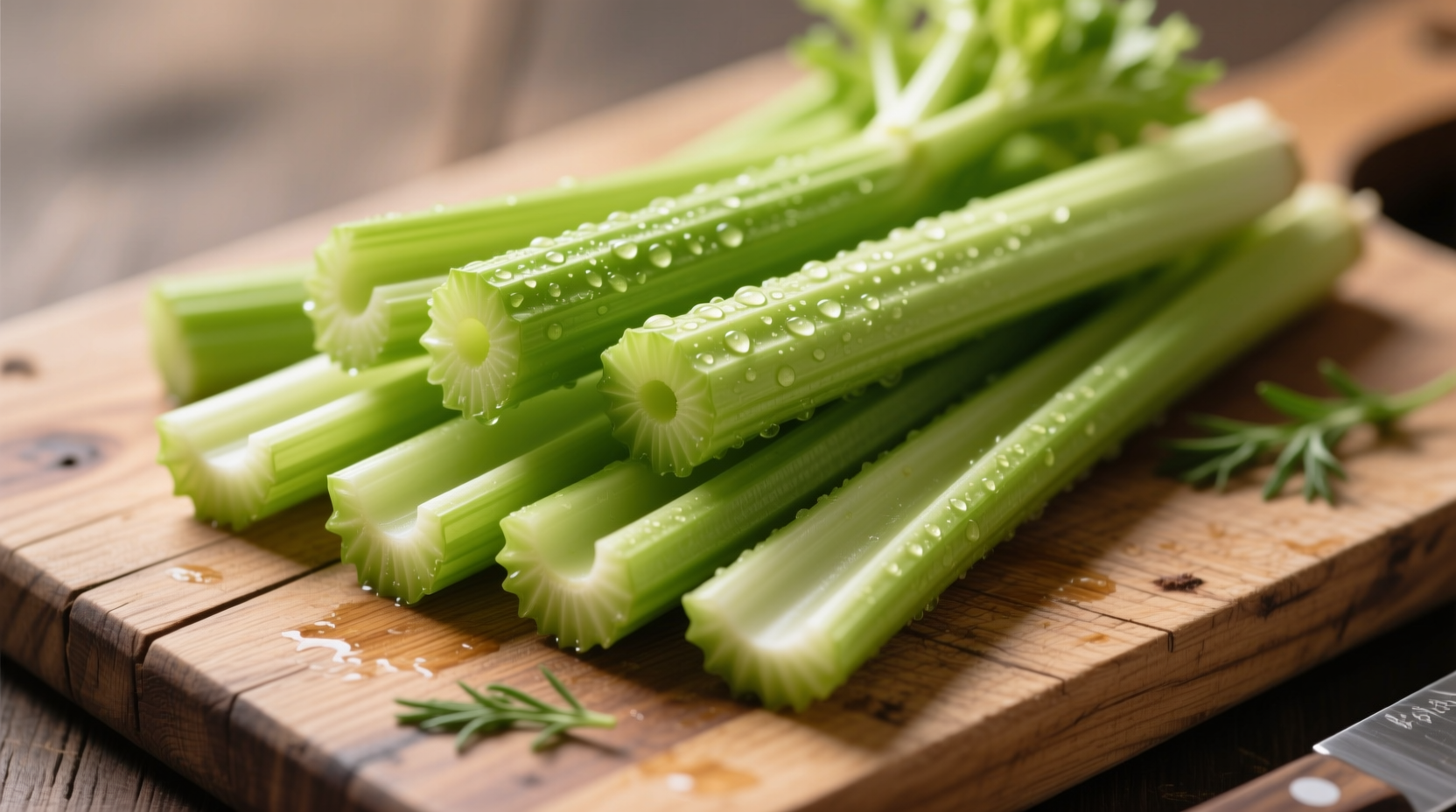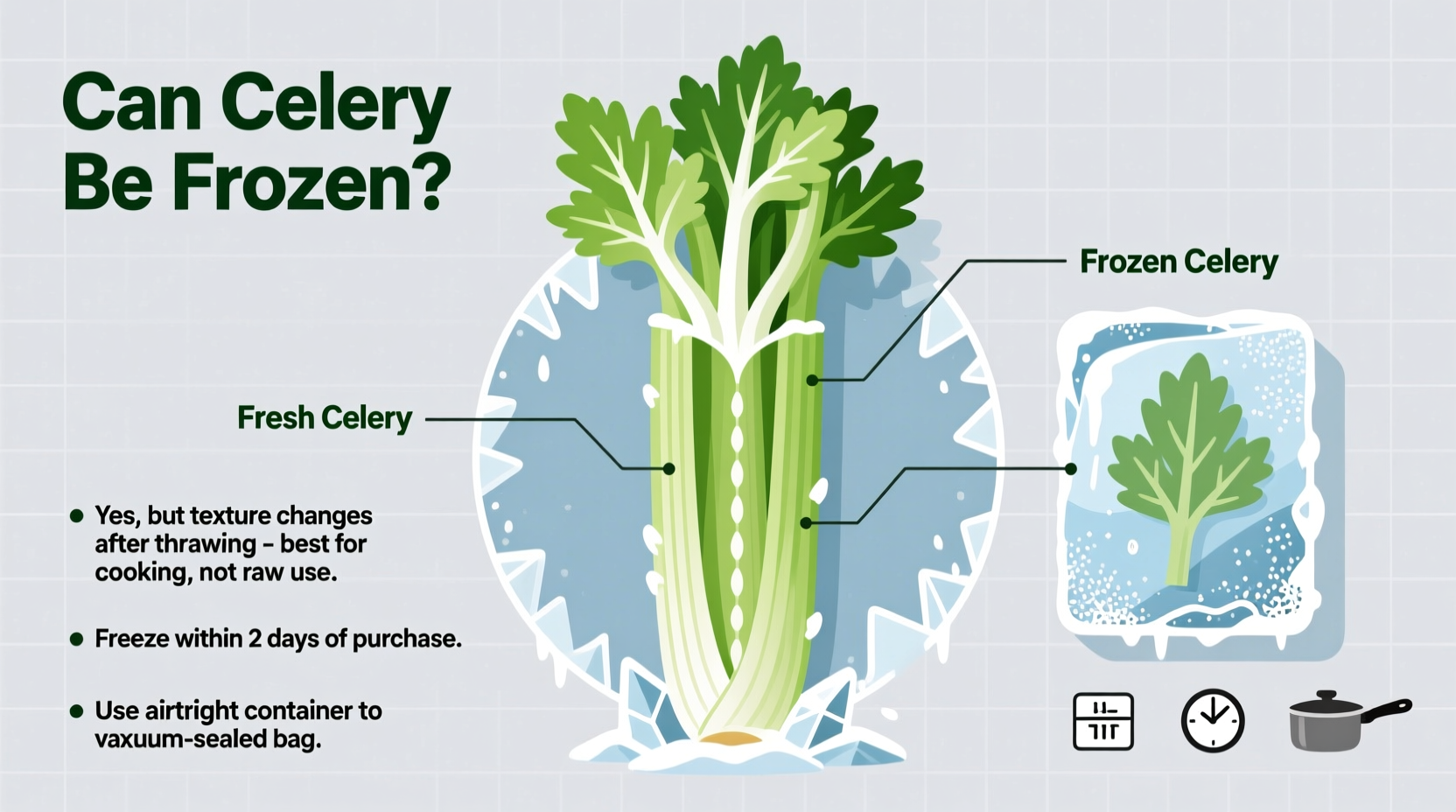Yes, you can freeze celery, but proper preparation is essential for maintaining quality. When frozen correctly using blanching techniques, celery retains flavor for 10-12 months while preserving nutritional value. Raw freezing without preparation leads to texture degradation within weeks.
Discover exactly how to freeze celery while preserving maximum flavor and texture for your cooking needs. This comprehensive guide reveals professional techniques used by chefs to extend celery's shelf life without compromising quality. You'll learn step-by-step methods, storage timelines, and creative ways to use frozen celery that most home cooks never consider.
The Science Behind Freezing Celery
Celery contains 95% water, making proper freezing technique critical for maintaining cellular structure. When water freezes, it expands, potentially rupturing cell walls and causing mushiness upon thawing. The key to successful celery freezing lies in managing this process through controlled preparation.
According to food science research from the National Center for Home Food Preservation, blanching celery before freezing deactivates enzymes that cause deterioration during frozen storage. This simple step preserves color, texture, and nutritional content significantly better than raw freezing.
Step-by-Step Freezing Methods Compared
| Method | Preparation Time | Texture After Thawing | Best For | Storage Duration |
|---|---|---|---|---|
| Blanched & Chopped | 15 minutes | Firm, usable texture | Soups, stews, sauces | 10-12 months |
| Raw Chopped | 5 minutes | Mushy, limp texture | Cooking applications only | 2-3 months |
| Flash Frozen Sticks | 20 minutes | Crisp texture | Cooking, not raw consumption | 8-10 months |
| Celery Juice Cubes | 10 minutes | Liquid form | Smoothies, stocks | 6 months |
Professional Freezing Technique: Step by Step
Follow these chef-recommended steps for optimal results:
- Selection: Choose crisp, firm stalks without browning. USDA research shows celery harvested at peak freshness freezes best.
- Cleaning: Wash thoroughly under cold water, removing all dirt from between ribs.
- Preparation: Chop into uniform 1/2-inch pieces for even freezing. Keep pieces consistent for uniform thawing.
- Blanching (critical step): Immerse in boiling water for 3 minutes, then immediately transfer to ice water bath for equal time.
- Drying: Pat completely dry with clean towels to prevent ice crystals.
- Flash Freezing: Spread pieces in single layer on parchment-lined tray. Freeze 1-2 hours until solid.
- Packaging: Transfer to airtight freezer bags, removing all air. Label with date.

Storage Timeline and Quality Preservation
Understanding how frozen celery degrades over time helps maximize usability:
- 0-3 months: Near-fresh quality, minimal texture changes
- 4-6 months: Slight texture softening, ideal for cooked dishes
- 7-9 months: Noticeable texture changes, best for soups and stocks
- 10-12 months: Significant texture degradation, use only in blended applications
The National Center for Home Food Preservation confirms that properly blanched and packaged celery maintains nutritional value for up to 12 months, though texture gradually declines after 6 months. Temperature consistency is crucial—fluctuations cause freezer burn and accelerate quality loss.
When Freezing Celery Isn't Recommended
Certain situations make freezing counterproductive:
- For raw consumption: Frozen-thawed celery loses crispness needed for salads and crudités
- With high moisture content: Wet celery before freezing creates ice crystals that damage texture
- Already damaged produce: Freezing accelerates deterioration of bruised or limp stalks
- For garnish purposes: Texture changes make frozen celery unsuitable as decorative element
Creative Uses for Frozen Celery
Maximize your frozen celery investment with these professional applications:
- Flavor base for stocks: Combine frozen celery, carrots, and onions for instant mirepoix
- Smoothie booster: Add frozen celery cubes for hydration and nutrients without strong flavor
- Quick soup starter: Toss frozen pieces directly into simmering broths
- Infused water ice cubes: Freeze celery juice with lemon slices for flavorful hydration
- Sauces and gravies: Blend thawed celery into creamy sauces for vegetable nutrition boost
Avoiding Common Freezing Mistakes
Based on culinary institute research, these errors compromise frozen celery quality:
- Skipping blanching: Leads to rapid texture degradation and flavor loss
- Improper packaging: Air exposure causes freezer burn and flavor transfer
- Freezing whole stalks: Results in uneven freezing and difficult portioning
- Thawing at room temperature: Promotes bacterial growth and texture damage
- Refreezing thawed celery: Causes significant texture breakdown
Thawing Techniques for Best Results
How you thaw frozen celery affects final quality:
- Direct cooking: Add frozen to soups, stews, or sauces without thawing
- Refrigerator thawing: Transfer to fridge 12-24 hours before use for cooked applications
- Cold water method: Submerge sealed bag in cold water for 30 minutes for quicker thawing
- Microwave (last resort): Use defrost setting for 1-2 minutes if urgently needed
Professional chefs recommend cooking frozen celery directly whenever possible, as the thawing process further breaks down cellular structure. For applications requiring precise texture control, refrigerator thawing provides the most consistent results.
Frequently Asked Questions
Can you freeze celery without blanching?
Yes, but quality deteriorates significantly faster. Unblanched celery develops off-flavors and mushy texture within 2-3 months. Blanching extends usable life to 10-12 months by deactivating enzymes that cause deterioration during frozen storage.
Does frozen celery get mushy when thawed?
Yes, thawed celery loses crispness due to water expansion during freezing. This makes it unsuitable for raw applications like salads, but perfect for cooked dishes where texture matters less. For best results, add frozen celery directly to hot dishes without thawing.
How do you use frozen celery in cooking?
Frozen celery works best in cooked applications. Add directly to soups, stews, sauces, and casseroles without thawing. For stir-fries, partially thaw first. Frozen celery loses crispness but retains flavor, making it ideal for dishes where texture isn't critical. Avoid using thawed frozen celery in raw applications.
Can you freeze celery leaves?
Yes, celery leaves freeze exceptionally well and actually improve in flavor when frozen. Chop leaves finely, spread on a tray to flash freeze, then transfer to airtight containers. Frozen celery leaves work beautifully as a flavor enhancer in stocks, soups, and sauces, providing more intense flavor than stalks.
Why does my frozen celery turn brown?
Browning occurs from enzyme activity that wasn't properly stopped during preparation. This happens when celery isn't blanched before freezing or when air exposure occurs in storage. To prevent browning, always blanch celery for 3 minutes before freezing and use airtight, vacuum-sealed packaging to eliminate air exposure.











 浙公网安备
33010002000092号
浙公网安备
33010002000092号 浙B2-20120091-4
浙B2-20120091-4